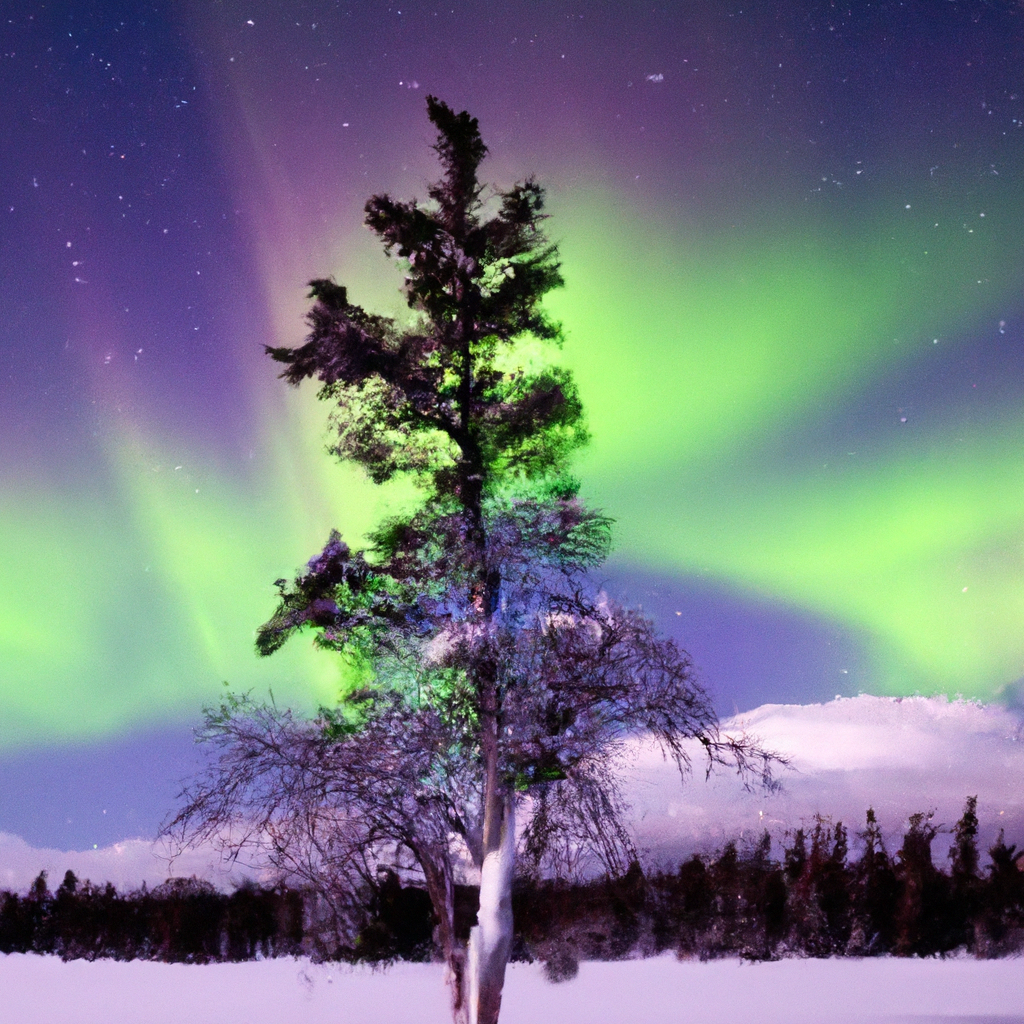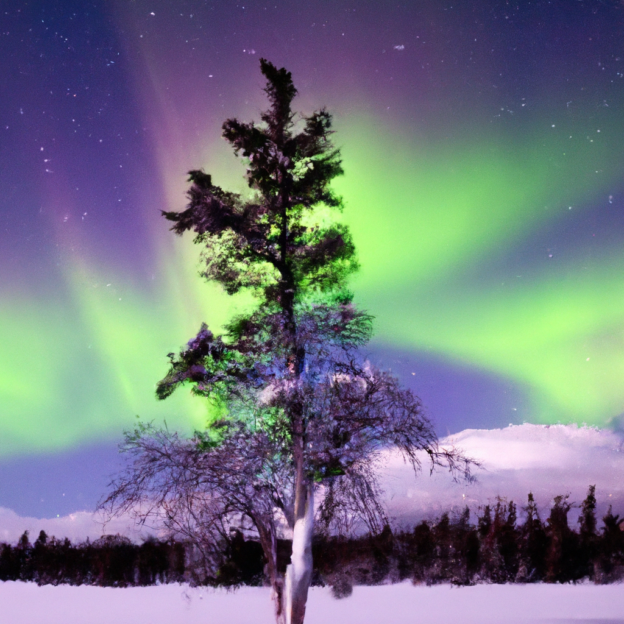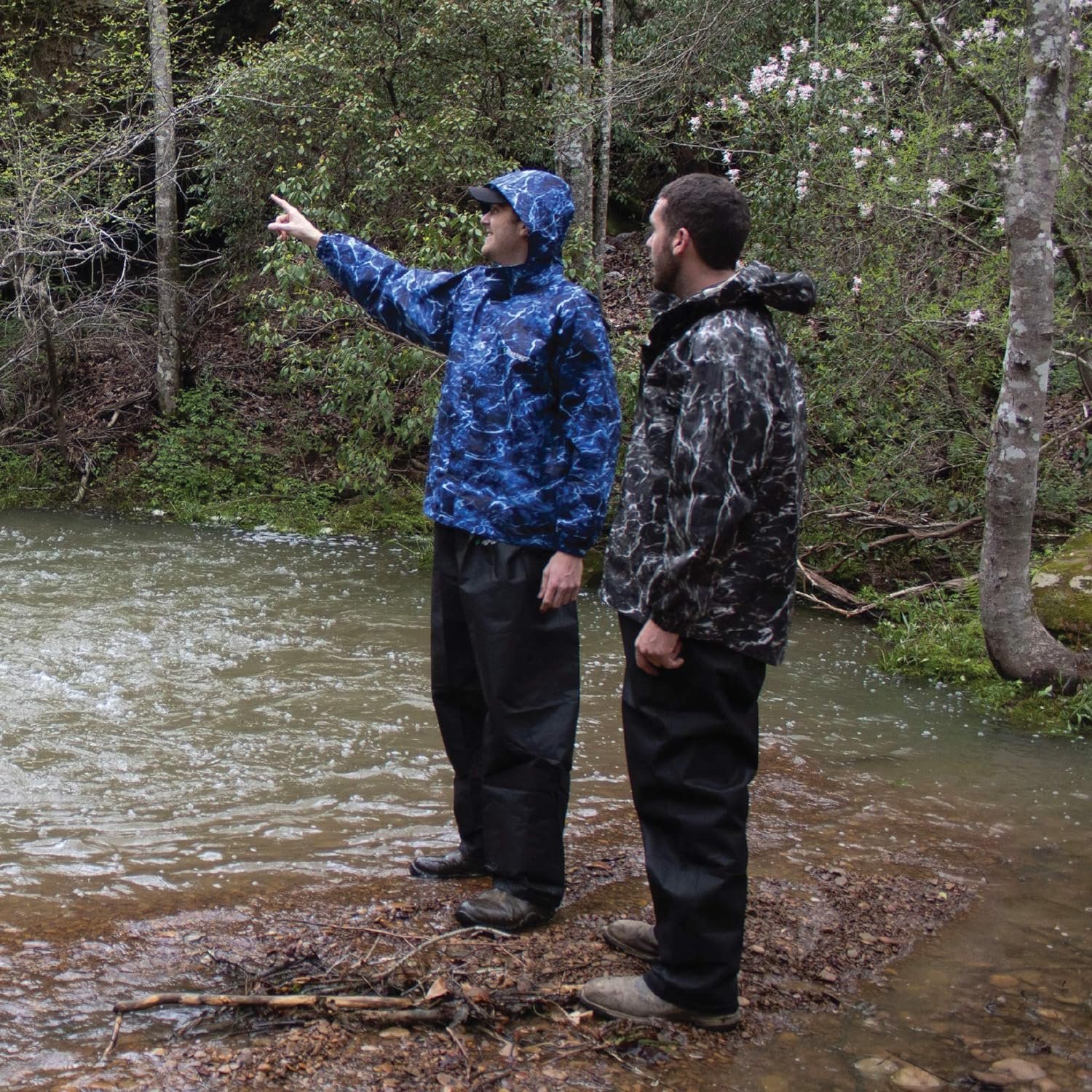Are you anxious to catch a breathtaking glimpse of the Northern Lights during your visit to Canada? Well, you’re in luck because we have the answer to one of the most frequently asked questions: what time of day is best to see the Northern Lights in Canada? The magical dance of colorful lights in the night sky usually occurs in the late evening or early morning hours when the sky is at its darkest.
So, be sure to set your alarm clocks and keep your eyes peeled for the stunning display of nature’s wonder during these twilight hours. Don’t miss out on this awe-inspiring experience – book your travel plans to Canada’s picturesque landscapes in New Brunswick today!

What Time Of Day Is Best To See The Northern Lights In Canada?
Table of Contents
Factors affecting the visibility of the Northern Lights
When planning a trip to see the Northern Lights in Canada, there are several factors that can affect the visibility of this incredible natural phenomenon. Understanding these factors can help increase your chances of witnessing the mesmerizing dance of colors in the night sky.
Geographical location
One of the most crucial factors in seeing the Northern Lights is your geographical location. Canada offers a vast expanse of land where the Northern Lights can be observed, but some regions have better visibility than others. The further north you go, the higher your chances of seeing the lights. Locations like Yukon, Northwest Territories, and Nunavut offer some of the best opportunities for viewing the Northern Lights in Canada.
Solar activity
The intensity and frequency of the Northern Lights depend on solar activity. Solar flares and storms release charged particles that interact with the Earth’s magnetosphere, creating the stunning auroras. Monitoring solar activity can give you an idea of when the Northern Lights may be more active. Websites and apps that provide Aurora forecasts can help you plan your trip accordingly.
Weather conditions
Clear skies are essential for optimal viewing of the Northern Lights. Cloud cover can hinder your visibility and obstruct the view of the auroras. Check the weather forecast before heading out to your chosen viewing location. Choosing a time when the skies are expected to be clear will greatly improve your chances of witnessing the magical display.
Light pollution
Light pollution from cities and towns can dim the brightness of the Northern Lights and make them harder to see. When selecting a viewing location, it’s best to find a place away from urban areas with minimal light pollution. Remote locations in northern Canada, such as Yukon and Northwest Territories, offer pristine dark skies that make for an unforgettable Northern Lights experience.
Ideal seasons for viewing the Northern Lights in Canada
While the Northern Lights can be seen in Canada throughout the year, there are certain seasons that are considered ideal for viewing this natural wonder.
Winter (December to March)
Winter is often regarded as the best season to see the Northern Lights in Canada. The long, dark nights provide a perfect backdrop for the dancing lights. The cold temperatures and snowy landscapes add to the enchanted atmosphere. Remember to bundle up in warm clothing and bring supplies to stay comfortable during the chilly winter nights.
Fall (September to November)
Fall is another great season for watching the Northern Lights in Canada. The temperatures are milder compared to winter, and the fall foliage adds a splash of vibrant colors to the scenery. This season provides a unique opportunity to witness the convergence of two natural spectacles – the Northern Lights and the changing colors of autumn.
Recommended locations for viewing the Northern Lights in Canada
Canada offers a multitude of locations where you can witness the Northern Lights in all their glory. Here are some highly recommended destinations for experiencing this breathtaking phenomenon:
Yukon
Yukon is often regarded as one of the best places in the world to see the Northern Lights. Its remote location, clear skies, and minimal light pollution make it an ideal spot for aurora viewing. Whitehorse and Dawson City are popular base camps for Northern Lights enthusiasts.
Northwest Territories
The Northwest Territories offer vast stretches of wilderness and dark skies that provide optimal conditions for Northern Lights viewing. Yellowknife, the territorial capital, is known for its accessibility to prime viewing locations and a range of Northern Lights tours and accommodations.
Nunavut
As the largest and northernmost territory in Canada, Nunavut offers pristine landscapes and remarkable Northern Lights displays. The communities of Rankin Inlet, Iqaluit, and Baker Lake are known for their excellent viewing opportunities.
Alberta
Alberta, known for its stunning Rocky Mountains, also provides a remarkable backdrop for the Northern Lights. Jasper and Banff National Parks offer breathtaking views of the auroras, along with opportunities for outdoor adventures during the day.
British Columbia
British Columbia offers a variety of Northern Lights viewing locations, including Tumbler Ridge, Fort Nelson, and Muncho Lake Provincial Park. These places provide a mix of wilderness and beautiful natural scenery, making for an unforgettable Northern Lights experience.
Saskatchewan
Saskatchewan, with its wide-open prairies and minimal light pollution, is a fantastic destination for viewing the Northern Lights. The communities of La Ronge, Prince Albert National Park, and Cypress Hills Interprovincial Park offer stunning displays of the auroras.
Manitoba
Manitoba, with its vast wilderness and dark skies, provides excellent opportunities for witnessing the Northern Lights. Churchill, known as the “Polar Bear Capital of the World,” offers unique chances to see the Northern Lights and polar bears together.
Ontario
In Ontario, the best places to view the Northern Lights include Thunder Bay, Lake Superior Provincial Park, and Manitoulin Island. These locations offer a mix of natural beauty and dark skies, allowing for unforgettable Northern Lights experiences.
Quebec
Quebec’s remote northern regions, such as Kuujjuaq and Nunavik, offer incredible Northern Lights displays. The combination of French-Canadian culture and the awe-inspiring auroras creates a truly unique experience.
Newfoundland and Labrador
Newfoundland and Labrador, situated on Canada’s eastern coast, also offer opportunities to witness the Northern Lights. The communities of Labrador City and St. John’s provide excellent Northern Lights viewing locations.
In each of these regions, be sure to check for local Northern Lights tours and accommodations that cater to aurora enthusiasts. Expert guides can enhance your experience and ensure you make the most of your Northern Lights adventure.
Best time of day to see the Northern Lights in Canada
Darkness and midnight sun
The best time to see the Northern Lights is during the darkest hours of the night. The absence of sunlight allows the auroras to shine brightly against the backdrop of the night sky. This is especially true during the winter months when the nights are longer in Canada’s northern regions.
However, in some parts of Canada, particularly in the summer months, the phenomenon known as the midnight sun can affect Northern Lights viewing. The midnight sun occurs when the sun does not fully set, resulting in 24-hour daylight. Although the Northern Lights can still be visible during this time, they may be more challenging to see due to the brightness of the sky.
Aurora forecast and activity peak
To increase your chances of seeing the Northern Lights, it’s important to check the Aurora forecast and activity levels. Websites and apps provide real-time information on the likelihood of auroras occurring in specific areas. Monitoring these forecasts can help you plan your Northern Lights viewing accordingly.
Aurora activity is measured on a scale from one to nine, with nine being the highest level of activity. Look for nights when the activity level is predicted to be high as this increases the chances of a dazzling display of Northern Lights.

Tips for optimizing Northern Lights viewing experience
Seeing the Northern Lights is an awe-inspiring experience, and here are some tips to make the most of your viewing:
Stay for multiple nights
The Northern Lights can be unpredictable, and it’s not uncommon for them to appear for a few nights in a row and then not be visible for a few nights after. To maximize your chances of seeing the auroras, plan to stay in your chosen location for several nights.
Avoid full moon nights
The brightness of a full moon can diminish the visibility of the Northern Lights. If possible, plan your trip during a new moon or when the moon is in its crescent phase for optimal viewing conditions.
Find a place with minimal light pollution
Light pollution can greatly diminish the visibility of the Northern Lights. Choose a location away from cities and towns to minimize the impact of artificial lighting on your viewing experience.
Stay away from city lights
In addition to light pollution, city lights can create a glow on the horizon that can obstruct your view of the auroras. Opt for remote areas with minimal light sources to get the best possible view of the Northern Lights.
Patience is key
Seeing the Northern Lights may require patience and persistence. Be prepared to spend long hours outside, as the auroras can appear at any time during the night. Stay vigilant and keep your eyes on the sky.
Bring warm clothing and supplies
Northern Canada can have extremely cold temperatures, especially during the winter months. Dress in layers and bring warm clothing, including hats, gloves, and boots, to ensure you stay comfortable during your viewing sessions. It’s also a good idea to bring snacks, water, and any other supplies you may need while waiting for the Northern Lights to appear.
Photography tips for capturing the Northern Lights in Canada
Capturing the beauty of the Northern Lights in photographs can be a rewarding experience. Here are some tips to help you capture stunning images of the auroras:
Use a tripod
Stability is crucial when photographing the Northern Lights, as you’ll likely be using long exposure times. A tripod will keep your camera steady and prevent any blurriness in your photos.
Adjust your camera settings
Experiment with different camera settings to find the best ones for capturing the Northern Lights. Start with manual mode and adjust the ISO, aperture, and shutter speed to achieve the desired exposure and clarity in your photos.
Experiment with long exposure shots
Long exposure shots can create stunning images of the Northern Lights, capturing their movement and vibrant colors. Start with exposure times of around 10-20 seconds and adjust as needed to achieve the desired effect.
Take multiple shots with different exposures
The Northern Lights can vary in brightness and intensity, so it’s a good idea to take multiple shots using different exposures. This will give you more options when selecting your final images.
Include foreground elements for perspective
Including foreground elements, such as trees, mountains, or buildings, can add depth and perspective to your Northern Lights photos. Experiment with different compositions to create visually appealing images.
Use a remote shutter release
Using a remote shutter release or the self-timer function on your camera can help minimize camera shake when taking long exposure shots. This will result in sharper and more professional-looking photos.
Alternative ways to experience the Northern Lights in Canada
While viewing the Northern Lights in their natural splendor is a captivating experience, there are alternative ways to enhance your adventure:
Northern Lights tours and cruises
Joining a Northern Lights tour or cruise can provide expert guidance and unique experiences. Tour operators offer packages that include transportation to prime viewing locations, accommodation, and knowledgeable guides who can share their insights and stories about the auroras.
Dog sledding under the Northern Lights
Dog sledding is a traditional and exhilarating way to explore the Canadian wilderness. Combine this thrilling activity with Northern Lights viewing, and you have a once-in-a-lifetime experience. Several tour operators offer dog sledding adventures that include nighttime Northern Lights viewing.
Hot springs and ice caves tours
Immerse yourself in nature by combining Northern Lights viewing with hot springs or ice cave tours. Relax in warm mineral-rich waters or explore mystical ice formations while waiting for the auroras to dance overhead. This unique combination offers a serene and enchanting experience.
Snowshoeing or skiing tours
Embrace the winter wonderland of Canada by embarking on snowshoeing or skiing tours that incorporate Northern Lights viewing. Traverse snowy landscapes, surrounded by towering trees and pristine wilderness, and witness the magic of the Northern Lights as they illuminate the night sky.
Famous festivals and events celebrating the Northern Lights in Canada
In addition to the natural wonder of the Northern Lights, Canada also hosts festivals and events that celebrate this mesmerizing phenomenon:
Yukon Sourdough Rendezvous
The Yukon Sourdough Rendezvous is an annual winter festival in Whitehorse, Yukon, that celebrates the culture, history, and traditions of the region. The festival features various events, including Northern Lights viewing, snow sculpture contests, dog sledding races, and live performances.
Winterlude in Ottawa
Winterlude, held in Ottawa, Ontario, is a renowned winter festival that showcases the best of Canadian winter traditions and activities. In addition to ice sculptures, ice skating, and snow slides, Winterlude offers Northern Lights viewing opportunities on clear winter nights.
Ice Music Festival in Yukon
The Ice Music Festival, held in Dawson City, Yukon, combines the beauty of the Northern Lights with the power of live music. Musicians from around the world gather to perform using instruments made entirely of ice. The festival creates a magical atmosphere, enhanced by the dancing lights of the auroras.
Festival du Voyageur in Manitoba
The Festival du Voyageur, held in Winnipeg, Manitoba, celebrates the rich fur trading history and French-Canadian culture of the region. The festival features various events, including traditional music, dance, food, and outdoor activities. Northern Lights viewing tours are also available during this time.
Conclusion
In conclusion, Canada offers a vast array of opportunities to witness the awe-inspiring Northern Lights. From the remote northern territories to the majestic Rocky Mountains, there are numerous locations that provide optimal conditions for experiencing this natural wonder. By considering factors such as geographical location, solar activity, weather conditions, and light pollution, you can increase your chances of witnessing the captivating dance of colors in the night sky.
Whether you choose to visit during the winter months, when the long dark nights create a perfect setting, or the fall season, when the changing colors of autumn add an extra layer of beauty, Canada’s Northern Lights destinations offer unforgettable experiences.
Remember to plan your trip, stay for multiple nights, dress warmly, and be patient. Consider alternative experiences like Northern Lights tours, dog sledding, and hot springs tours to enhance your adventure. And don’t forget to capture the magic with your camera by following photography tips and techniques.
So, why wait? Plan your Northern Lights adventure now and book your trip to Canada’s enchanting Northern Lights destinations. Immerse yourself in the wonder of the auroras and create memories that will last a lifetime.



